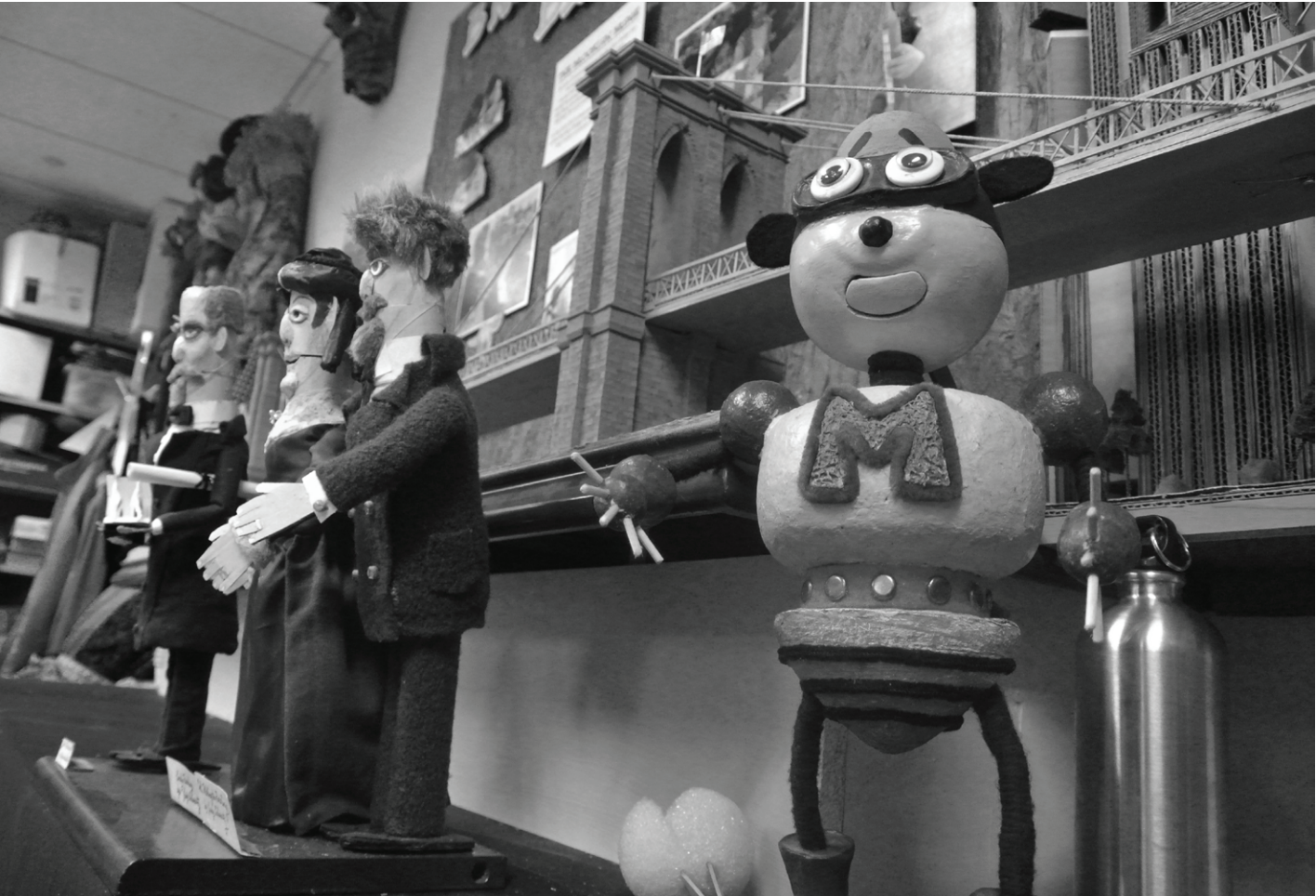puppets made by PIP students. PHOTO/ Michelle Nash
By Sasha Ramroop
Published: October 21, 2014
Nearly 30 years ago, a student and a professor founded a club at Brooklyn College. Now, the club is a non-profit organization that travels to schools across New York City. Director and founder Tova Ackerman said it all started with one simple reason: “I like to tell stories.”
At Brooklyn College in 1979, Ackerman’s field of study focued on children who learned English as a second language. She noticed that after coming to the United States, it took children several years to learn English, and that, during that time period, certain activities they did in the classroom were led as if the children spoke the language with similar proficiency.
To address this apparent issue, Puppetry In Practice (PIP) was created. It aims to teach students teachers how to “get ideas on how to make the teaching more exciting and also bring the arts into the classroom,” Ackerman said.
“Many people feel that…it’s nice to do art. [They think,] ‘let’s do art after the children learn to do English, science,’” Ackerman said. “We say the best way to do that is through exciting techniques.”
“A child, for example, might be building a set, building a toy theater, making a mechanism …with all the kinds of things that go into doing theater and puppetry,” she added. “They have to think about the character, about the mechanics, about making the mouth move—all of these complex activities, so their minds are full of ideas that they’re doing and the English will catch up. But if everything stops until a student is fluent in English, I myself think they might never get those years back.”
PIP’s artists teach these techniques in New York City schools. Many schools that partner with PIP hired Brooklyn College student teachers who work alongside the undergraduate and graduate students. Public school teachers then use the methods PIP taught and perform fiction or non-fiction puppet shows, documentaries, stop-motion animation, speeches, music, art, and theater.
PIP trains teachers and knows that they’ve done a successful job when they don’t need their help again. Workshops typically run once a week for seven to 10 weeks. In addition to working with city schools, PIP partners with the Early Childhood Center weekly.
To construct puppets and other props, artists use mostly recyclable materials. “Nothing gets wasted,” Ackerman explained. “If the city runs out of money or art material, there’ll always be cardboard…and imagination.”
One of the many artists who graces this non-profit is uthor and illustrator Angelo DeCesare, creator of the “Flip’s Fantastic Journal” series.
“He goes into the schools and the kids have a chance not just to work with the characters but to work with the actual author who created them, and it’s exciting to them,” Ackerman said. Once, she recalled, he showed them a crumpled piece of paper with a drawing on it that was a drawing of his first character at the age of seven.
Since the program began, Ackerman said that it has facilitated classroom education successfully due to the enthusiasm of Brooklyn College’s staff. However, PIP does face some challenges, most notably having to produce quantitative research that proves their impact in the classroom significantly helps the learning process. Ackerman hopes to show that “what [they] spent a lifetime doing should be done in every school in this country.”
The Puppetry In Practice Center is located in 0712 James Hall and is open to all those who are interested.




